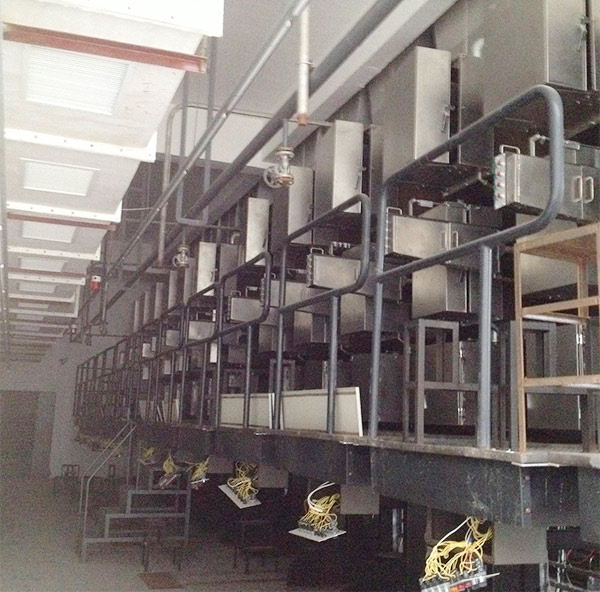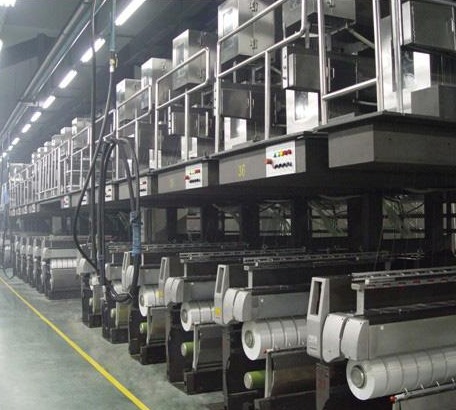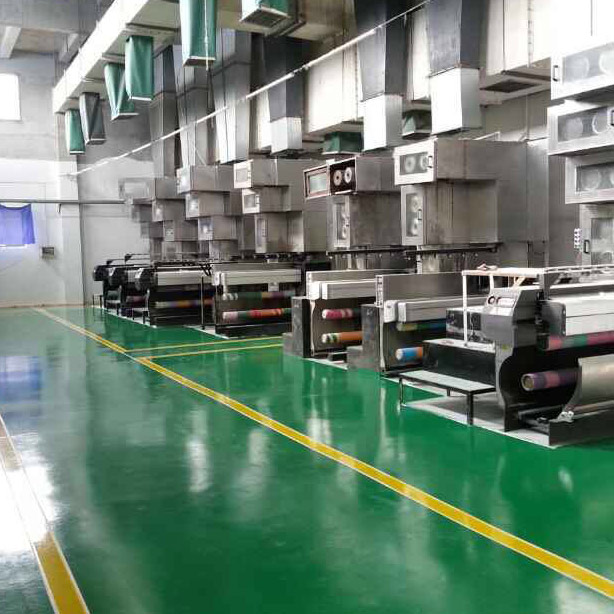- Polypropylene spinning machine
- Polypropylene FDY equipment
- Polyester POY spinning machine
- Polyamide FDY common and high strength equipment
- Polyester FDY equipment
- Polyester high strength equipment
- polyester、Polyamide、 Polypropylene BCF equipment
- Small spinning machine
- All kinds of spinning special parts
- Polypropylene FDY spinning machine is a key equipment for the production of high-performance fibers
- Several silk textile industry renewal projects in Shengze have started construction
- The Winter Solstice marks the rise of Yang energy. In Fubon spinning machines, the Winter Solstice code is revealed, a dialogue of craftsmanship spanning a thousand years
- The establishment conference of Guangzhou Modern Textile and Garment New Quality Productivity Research Institute and the co-construction conference of the textile industry innovation ecosystem were held
- The key points of control in the polypropylene FDY spinning machine process and their relationship with quality

- Contact:Mr. Huang Guofu
- Cel:0086-13901505556
- Fax:0086-519-83341119
- Email:czfb5556@126.com
- Add:No. 288-8 ChangLi Rd, Huangli Town, Changzhou, JS PRV.
January-July Textile and Apparel Export Data
The General Administration of Customs recently reported that from January to July this year, the total export volume of textiles and apparel nationwide reached US$168.35 billion, a year-on-year increase of 7.7%, and the growth rate was 4.4 percentage points lower than that in the first half of the year. Among them, textile exports were US$80.25 billion, a year-on-year decrease of 10.8%, and clothing exports were US$88.10 billion, a year-on-year increase of 32.9%.
In July, my country's textile and apparel global exports amounted to US$28.27 billion, a year-on-year decrease of 9.5%. Among them, textile exports amounted to 11.70 billion U.S. dollars, a year-on-year decrease of 26.7%, but an increase of 8.6% over the same period before the epidemic. In July, my country's clothing exports continued to maintain a good growth trend. The export value of the month was 16.58 billion US dollars, an increase of 8.3% year-on-year and a month-on-month increase of 9.4%.
Textile exports are not optimistic
Although imports and exports hit a record high in the same period in July, textile exports are not optimistic. Statistics show that my country’s exports of textiles (including textile yarns, fabrics and products) in July amounted to 11.698.2 billion U.S. dollars, a decrease of 4.278.7 billion U.S. dollars from the same period in 2020, a drop of 26.78%; and the cumulative value of my country’s textile exports from January to July was 802.529. Billion US dollars, down 10.8% year-on-year. The textile export data for the first July of this year turned out to be worse than that during the epidemic last year, and the data for the month of July not only fell by more than one-third compared with July last year, but also dropped by nearly 7% from June.
Not only are shipping costs skyrocketing, but the prices of upstream raw materials are also rising. The textile and clothing enterprises in coastal areas such as Guangdong, Jiangsu and Zhejiang all stated that the price of cotton and cotton yarn rose sharply in June and July, and the bargaining power of domestic and foreign orders in the terminal was weak. "The dilemma, so the enthusiasm for receiving orders, placing orders, and delivering goods is not high.
In this regard, the China Chamber of Commerce for Import and Export of Textiles stated that in the first half of this year, with the recovery of international market demand, coupled with the return of orders caused by epidemics in other supplier countries and the turmoil of the situation, my country's clothing exports have shown a good recovery trend. Looking forward to the second half of the year, as the US$2 trillion cash subsidy effect fades, the three major obstacles of the superimposed exchange rate, freight and raw material prices, there is still uncertainty about the growth trend of my country's clothing exports in the second half of the year.
"Delta" wreaks havoc in Southeast Asia
The new "Delta" mutant strain has torn open the "anti-epidemic" line of defense in many countries. The total number of confirmed cases of the new crown in Vietnam has exceeded 240,000. Since late July, the number of new cases has basically exceeded 7,000 in a single day. The largest city and economic center Ho Chi Minh City has become the center of this round of the epidemic.
Affected by the epidemic, Vietnam’s production in August was “extremely difficult”, especially for the southern region where 90% of the production chain has been broken, and only 70-80% of the clothing and textile enterprises in the northern region are still operating. The delivery pressure during the epidemic is a big challenge for apparel textile companies. If they cannot deliver on time, their customers will cancel orders, which will affect production this year and next year.
Southeast Asia, under the delta variant virus, is currently the most severely hit by the epidemic. The industrial output of seven Southeast Asian countries has been hit hard, setting the largest contraction since May last year, with the exception of Vietnam, Indonesia and Malaysia. The current situation is not optimistic. The latest outbreak report on August 11 local time in Indonesia showed that there were 30,625 newly confirmed cases of new coronary pneumonia in the past 24 hours, with a total of 3,749,446 confirmed cases. The number of confirmed diagnoses in a single day in Malaysia has exceeded 20,000, and the cumulative number of confirmed diagnoses has exceeded 1.32 million. About 1.2 million Malaysians are currently unemployed. The Malaysian government plans to gradually restart production activities when the number of cases drops below 4,000 per day. It seems that it is still far away.
Risks associated with order transfer
These countries are important textile production and export countries. The epidemic has severely damaged their production, and it is possible to transfer some textile orders from these countries to my country. However, the transfer of orders also brings huge risks. Since the outbreak of the new crown virus abroad, there are not a few domestic foreign trade companies that have been affected and cannot accept orders or deliver goods.
Looking back at last year, the textile industry almost stagnated due to the epidemic in the first half of the year, and then gradually recovered as the epidemic improved. However, this year's repeated overseas epidemics made the textile foreign trade market unremarkable. Until July, the epidemic further aggravated, some areas imposed strict restrictions, and orders stalled again. It is currently the textile low season, and the impact of the stagnant orders is relatively small, but it is still unknown when the order can be resumed, and everything depends on the trend of the epidemic. If the overseas epidemic situation does not improve in September, the peak season in the second half of the year may also pass by foreign trade companies.
Judging from the current epidemic situation, it will take time for Southeast Asia to get rid of the predicament of the spread of the epidemic, and after getting rid of it, it will take longer for the economy to recover. The foreign trade market in the second half of the year is still facing many difficulties. Even if the peak season comes, the popularity of the market may be discounted.
Disclaimer: This article is compiled from the Internet, and the copyright belongs to the original author; if there is any infringement, please inform it in time and delete it after verification.
- Several silk textile industry renewal projects in Shengze have started construction
- Polypropylene FDY spinning machine is a key equipment for the production of high-performan
- The Winter Solstice marks the rise of Yang energy. In Fubon spinning machines, the Winter
- The establishment conference of Guangzhou Modern Textile and Garment New Quality Productiv
- The key points of control in the polypropylene FDY spinning machine process and their rela
- A Guide for Managers to Break Through: Empowerment Rather than Control: Helping Enterprise
- The 2025 Textile and Garment Innovation Annual Conference and the Gongqingcheng Down Indus
- The technological upgrade of polypropylene FDY spinning machines empowers the production o
- Textile News: Full-chain Efforts + Cross-border Breakthroughs + Talent Foundation - The Te
- The 2025 China Home Textile Fashion Innovation Conference grandly kicked off in Binzhou




